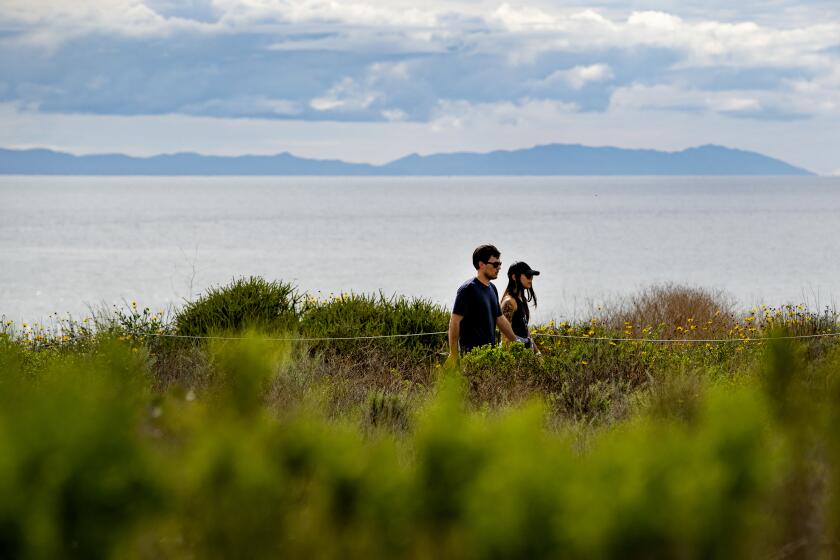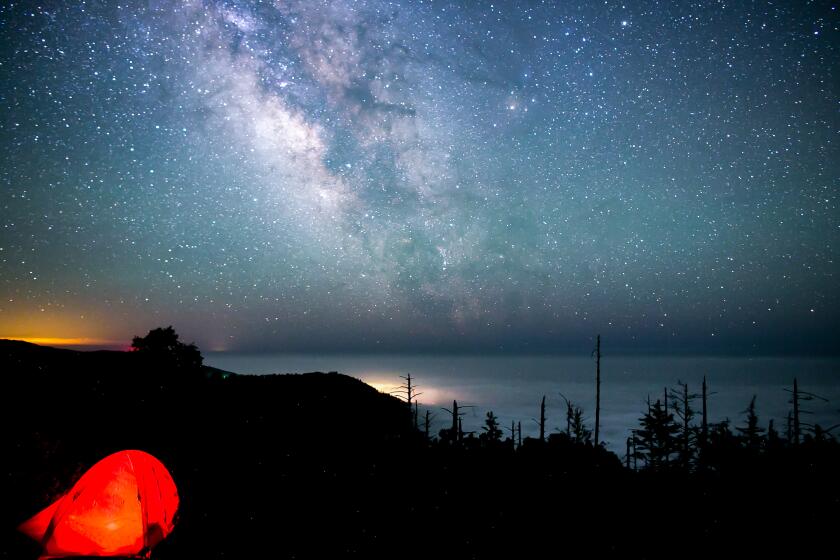Elsewhere : Unhappy Campers: Recreation Area Cuts Dampen Outdoor Season
Crystal Lake campers used to trudge into Armand Denis’ country store with their big fish stories, their sudden urge for a marshmallow, their wonder at the moon glow through a forest of cedar and pine.
Now, five days a week, Crystal Lake recreation area is a virtual ghost town, and Denis must bide his time until the people arrive on the weekend.
As spring ushers in the busy camping and hiking season, visitors to Angeles National Forest face Draconian cutbacks at the Crystal Lake recreation area and the closure of four of six other recreation sites in the Mt. Baldy Ranger District. Thousands of people will find it much harder, and sometimes impossible, to camp, fish or picnic in developed areas of the district, which draws 7.5 million visitors a year--more than Yosemite and Yellowstone national parks combined.
Crystal Lake recreation area, 26 miles north of Azusa, once drew crowds of more than 2,000 people on busy days to its 11 marked trails, scores of campsites, rock-work amphitheater and natural lake stocked with rainbow trout. But in late October, new federal budget cuts hit the 800-acre recreation grounds, one of the top draws in the Angeles National Forest, forcing the U.S. Forest Service on weekdays to shut the campgrounds entirely and close the gates to all but foot traffic.
Hiking and fishing are still allowed, as long as visitors are willing to make the two-mile hike from the locked parking gates to the trails or 1 1/2-mile hike to the lake. But some drivers pull up to the locked gate and turn around, not realizing that they are allowed to walk in.
And forest residents complain that frustrated campers and hikers are forging into unsupervised places and leaving a mess.
Besides limiting operations at Crystal Lake, the forest service has closed Manker Flats Campground, Deer Flats Group Campground, Glacier Picnic Area and Little Dalton Picnic Area. But these sites are much smaller than Crystal Lake.
Denis lives amid the hushed grandeur of snow-frosted trees, in a one-room cabin behind his store at one of the Crystal Lake campgrounds, not far from the cabin of his twin brother, the store’s co-owner. Last year the 176 campsites bustled with activity throughout the week. This year, the splendor is his alone on weekdays, except for the occasional hardy hiker or fishing fan. On a recent afternoon, the only sound was the brisk tat-tat-tat-tat of a woodpecker.
“It’s so nice up here, so beautiful, and they have the gates closed,” said Denis, 67. “It kills me.”
Mt. Baldy officials are just as distraught.
“It’s everything you think a national forest should be, this close to (the cities), yet we can’t make it available in a way it should be,” said recreation officer Tom Spencer with frustration in his voice.
Throughout the 694,000-acre forest’s five districts, shrinking budgets and rising costs are taking money away from camping, hiking, fishing and picnic areas. In the 155,000-acre Mt. Baldy district, which stretches from Duarte to the San Bernardino County line, the $155,500 budget for developed recreation sites was sliced by more than 25% in fiscal 1994.
“We have to make tough decisions about what we can keep open and what we have to close,” said Forest Supervisor Michael J. Rogers, who oversees the second busiest forest in the country, with more than 32 million visitors each year.
Mt. Baldy district officials have put off scheduled improvements at recreation areas, such as federally required wheelchair ramps and other accommodations for people with disabilities. They also laid off six temporary recreation employees, leaving only four field workers to clean and maintain recreation areas.
So far, forest officials say they have fielded few complaints about the cutbacks. But they are bracing for the urban crowd that arrives once spring wildflowers begin to bloom and evenings turn balmy.
Sign up for The Wild
We’ll help you find the best places to hike, bike and run, as well as the perfect silent spots for meditation and yoga.
You may occasionally receive promotional content from the Los Angeles Times.



